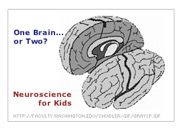Neuropsychology
Scarred Memory: A World War II Nurse's Lobotomy
2015/01/26 14:47
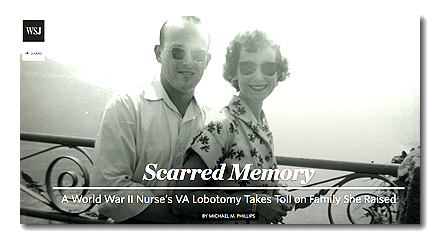
by Michael M. Phillips
"Dorothy is one of the last survivors among roughly 2,000 psychiatrically ill veterans the Veterans Administration lobotomized in the 1940s and 1950s. The Wall Street Journal in 2013 first detailed the VA lobotomy program and profiled the troubled life of World War II pilot Roman Tritz, 91, the only living lobotomized veteran the newspaper could locate at the time.
Lawmakers then asked the VA to find other surviving lobotomized veterans. VA headquarters, which says its files on such old cases are archived and difficult to access, hadn’t found any other survivors when Dorothy’s family contacted the Journal."
Félix Vicq D'Azyr (1786) Brain Images
2012/09/03 15:11
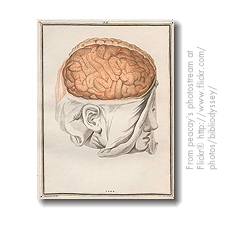
BTW, while he died during The Terror period of the French Revolution (1794), his passing was due to pneumonia rather than the guillotine.
I was struck both by how beautiful the engravings are as well as their accuracy/informative quality. A link is provided to the set on Flickr® with varying sizes available of each plate for download and use.
At the bottom of the entry, there is a very helpful list of online sources regarding Vicq D'Azyr and this volume.
BrainFacts.Org
2012/05/08 13:08

The brain is the most complex biological structure in the known universe. It is a topic rich with exciting new discoveries, continuing profound unknowns, and critical implications for individuals, families, and societies.
The site is a public information initiative of The Kavli Foundation, the Gatsby Charitable Foundation, and the Society for Neuroscience, all leading global nonprofit organizations working to advance brain research. Leading neuroscientists from around the world form the BrainFacts.org editorial board." (site blurb)
The site has sections dedicated to
- Neuroscience in General
- Brain Basics
- Sensing, Thinking, and Behaving
- Diseases & Disorders
- Across the Lifespan
- In Society
Charlie Rose: Brain Series
2012/03/24 14:52
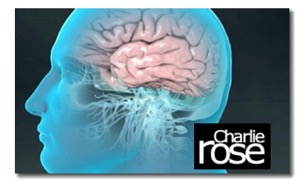
- Episode 1 - The Great Mysteries of the Human Brain
- Episode 2 - The Perceiving Brain
- Episode 3 - The Acting Brain
- Episode 4 - The Social Brain
- Episode 5 - The Developing Brain
- Episode 6 - The Aging Brain
- Episode 7 - The Emotional and Vulnerable Brain
- Episode 8 - The Anxious Brain
- Episode 9 - The Mentally Ill Brain
- Episode 10 - The Disordered Brain
- Episode 11 - The Deciding Brain
- Episode 12 - The Creative Brain
- Episode 13 - Highlights from the Series
Seems like a series I want to explore some more. Each episode can be viewed online or purchased as a DVD.
The Split Brain
2012/03/15 14:13
A news feature at Nature, "The Split Brain: A Tale of Two Halves" should intrigue psychologists and others interested in the development of our understanding of hemispheric dominance in the brain. Written by David Wolman, it describes the role of patients in the 1960s enlisted after their "split brain" operations (cerebral commissurotomies) as Roger Sperry, Michael Gazzaniga, and others learned about the brain's functioning from their responses to testing.
Treating Brain Injuries: The Work of Occupational Therapists
2008/01/15 01:15
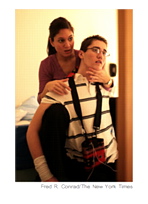
Over the last couple of weeks, I've finished reading two books about the experience of brain injury and this article reminded me of many issues raised in those personal memoirs. The first book, Where Is The Mango Princess? (Crimmins, 2000) offers a harrowing portrait of the realities of brain injury in the lives of a middle-aged husband and father, Alan, his wife, Cathy (the author), and their child, Kelly. Cathy's rage against the horrors of the insurance industry and the regular but heartless denial of benefits to its policy holders could hardly be better described. More subtle and personal is the 1998 autobiographical narrative of Dr. Claudia Osborn, called Over My Head: A Doctor's Own Story of Head Injury from the Inside Looking Out. Osborn is a medical internist, originally practicing in an inner-city hospital in Detroit, Michigan whose brain injury brought her to New York City's NYU-Rusk Institute of Rehabilitation Medicine and its famous Head Trauma Program (HTP) directed by Dr. Yehuda Ben-Yishay. From the first-person perspective that Osborn adopts, she weaves a powerful tapestry of the multiple and elusive problems, particularly inattention & adynamia, that TBI survivors like herself must confront and cope with. I'd be remiss if I didn't also mention a book I read in a pre-publication version about six years ago. The volume, Rescuing Jeffrey: A Memoir, was written by Richard Galli, the father of the 17-year-old boy who dove into a pool and hit his head. The effect was a disabling spinal cord injury and a perilous journey through medical and rehabilitation crises for both Jeffrey and his family. It is essential, I think, to come to grips with the experiences portrayed in books and articles like these if we wish to understand how different life becomes after injury to the central nervous system.
Target Link: Hoffman, J. (2008, January 15). Coaching the comeback. New York Times. Downloaded January 15, 2008 from the New York Times website.
References
- Crimmins, Cathy. (2000). Where is the mango princess? New York: Knopf. ISBN: 0375404910 (hardcover) 0375704426 (pbk)
- Galli, Richard. (2000). Rescuing Jeffrey: A memoir. New York: St. Martin's Griffin. ISBN: 1565122704 (hardcover) 0312283407 (pbk)
- Osborn, Claudia L. (1998). Over my head: A doctor's own story of head injury from the inside looking out. Kansas City, MO: Andrews McMeel Publishing. ISBN: 0836254198 (hardcover) 0740705989 (pbk)
- Dr. Claudia Osborn's Personal Website
